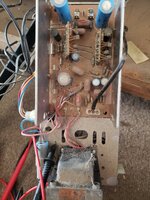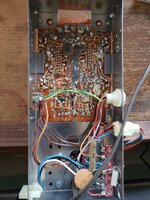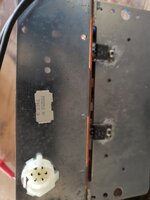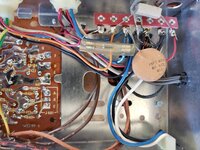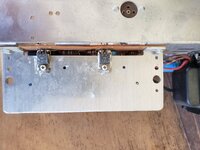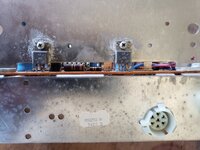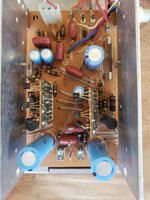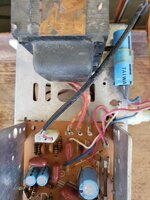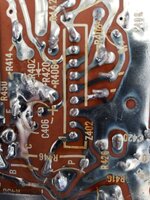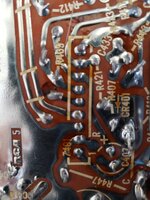pityocamptes
Junior Member level 2

- Joined
- Sep 12, 2012
- Messages
- 21
- Helped
- 0
- Reputation
- 0
- Reaction score
- 0
- Trophy points
- 1,281
- Activity points
- 1,461
The right channel is being amplified, the left is not. I tested the transformer voltage on both outputs and trans is working at around 23v per leg. At the output im getting around 4 volts or right, 0 on left. You can still hear unamplified signal through left channel though. Does anyone based on the pic have an idea where I can start taking readings? I have VM. Any help appreciated. Thx
